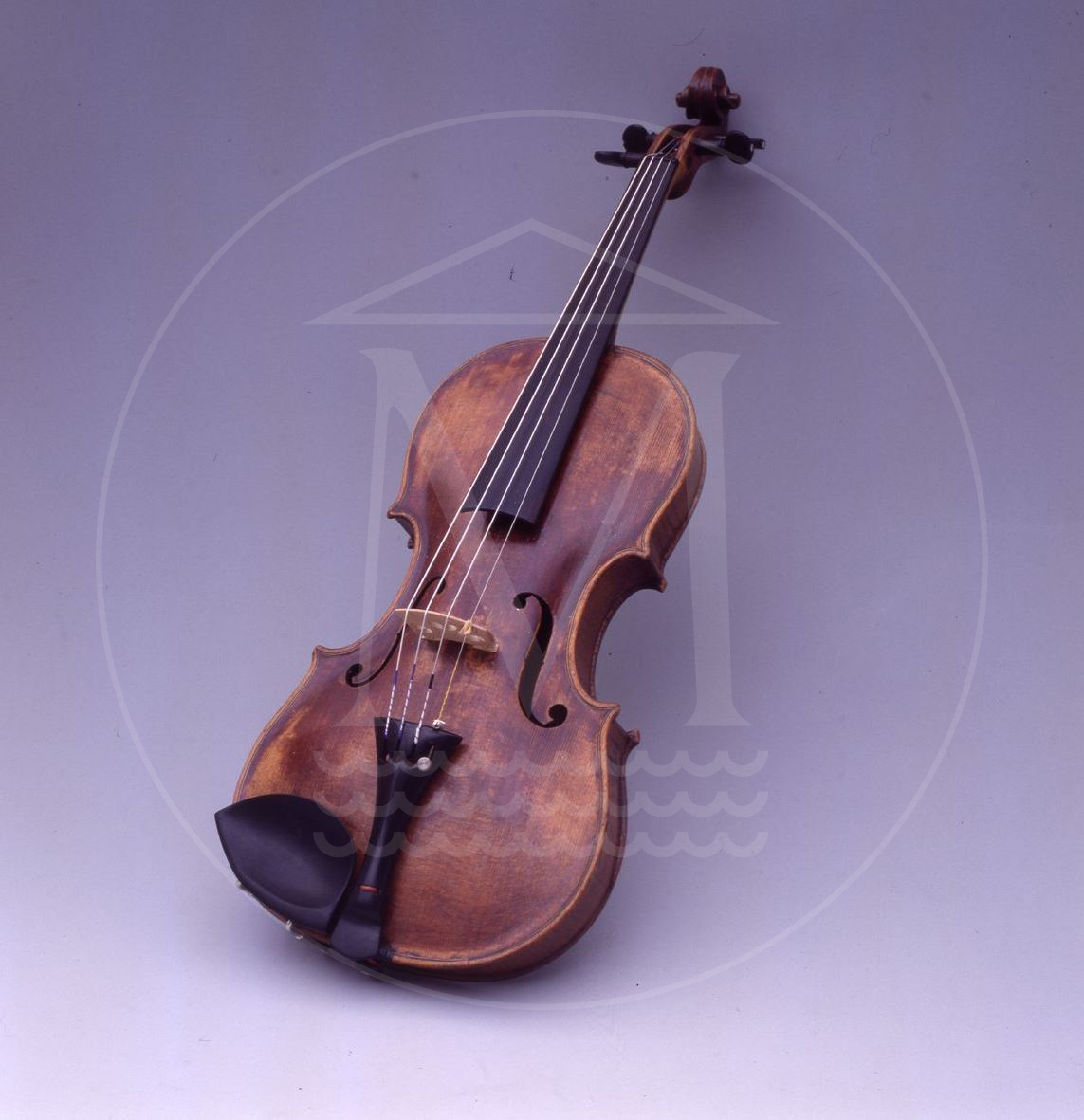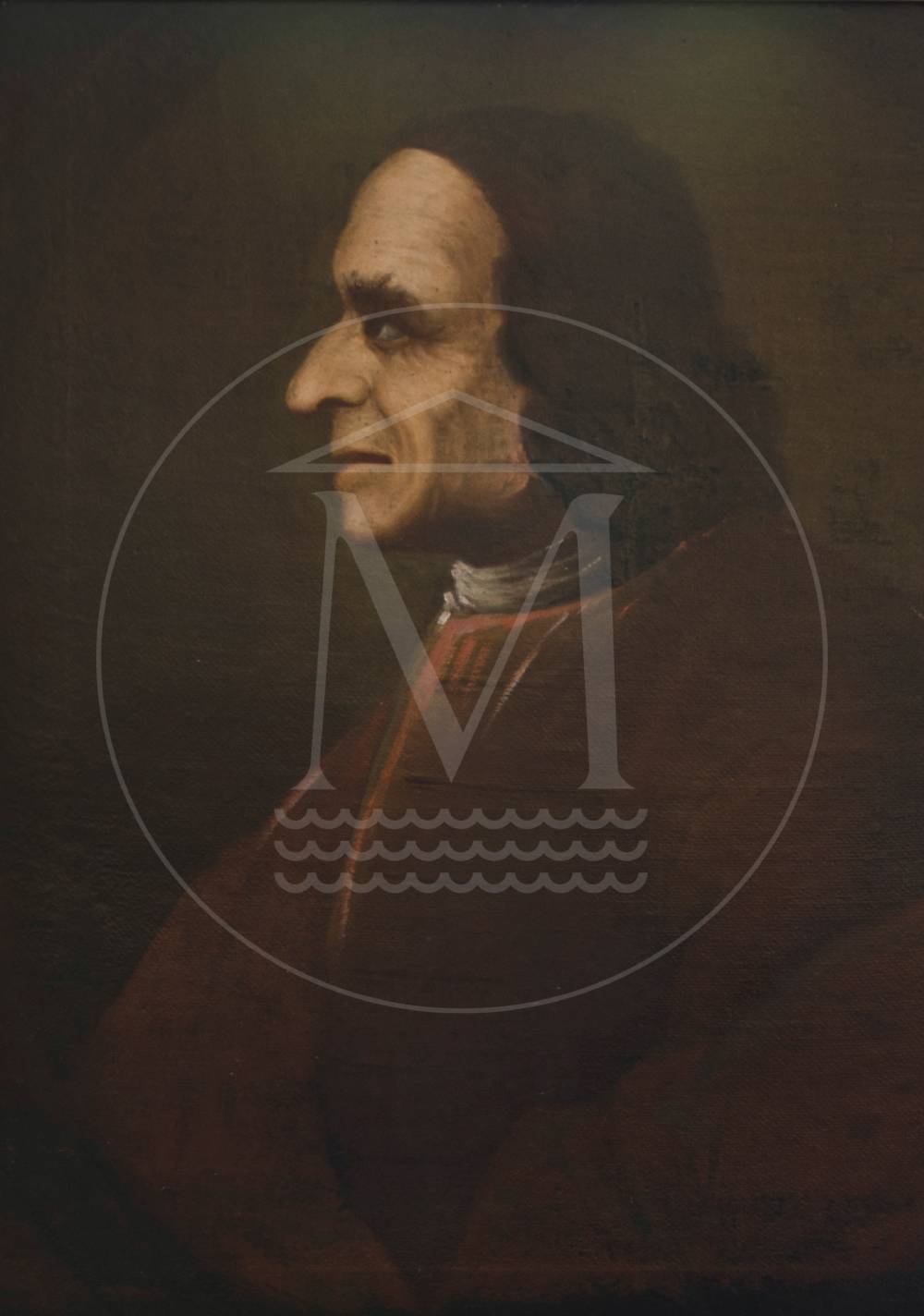MUSEUM COLLECTION OF GIUSEPPE TARTINI IN HIS BIRTHPLACE IN PIRAN

Tartini's house of birth is today the seat of the Italian Community »Giuseppe Tartini«, where its various activities are carried out. It stands in a row of houses along the northern side of Tartini Square and is a cultural monument of middle class architecture. After its corporate restoration in1988 and 1992, several paintings were also restored in it, made predominantly to order by Tartini's nephew, Captain Pietro Bartolomeo Tartini. The building stands in the place of Casa Pizagrua, a 14th century Gothic house, built along the Church of St. Peter – once close to the inner harbour – by the respectable Piran Pizagrua family. Since then, the house has been rebuilt several times as well as decorated with paintings in different periods. In its centre, a water cistern has been preserved, together with the fountain bearing the year 1821 – the date of the last major construction works. Its present neo-classicist exterior was made in the 19th century.
In the recently concluded project Cultural tourism under the banner of Giuseppe Tartini (tARTini - programme Interreg Italy – Slovenia), the historical building was thoroughly rebuilt. The Museum Collection of Giuseppe Tartini was set up in it, with new equipment, infrastructure and technology, which enable a better implementation of the planned museal and cultural activities, as well as access to the professional and popular research and information via the Internet.
Museum collection of Giuseppe Tartini
In 1992, a permanent museum collection – a non-residential unit of the Piran Maritime Museum – was set up in Tartini's house of birth in honour of Giuseppe Tartini (Piran, 8 April 1692 – Padua, 26 February 1770), the violin virtuoso, composer, music theorist and music pedagogue of global fame, undoubtedly the most prominent personality of the town of Piran.
Until this year, the precious legacy has been on display in a smaller room, the former bedroom – »alcova«, embellished with original baroque ceiling painting, stucco and the Tartini family's coat of arms. It is quite possible that Tartini, who was christened on 8 April in the baptistery of St. John the Baptist along the Parish Church of St. George in Piran, was born in this very room, with the date of his baptism accepted as the date of his birth.

Tartini's violin, the most precious exhibit, holds a central place in the house. Since recently, it has been on display in the fully painted Room with landscapes and flower still life, where we can admire and encircle it, and at the same time listen to its sound, i.e. best known Tartini's sonatas recorded on a unique CD Tartini's Violin (Črtomir Šiškovič, Luca Ferrini).
Tartini's violin, one of the three bequeathed by Giuseppe and the only one kept in his town of birth from time immemorial. It was made by priest Nicolò Amati - Nicolò Marchioni from Bologna and is dated to the period between 1715 and 1725.
The ownership of Tartini’s violin was confirmed in 1937 in Cremona, where a certificate of ownership, which is also on display in the museum collection, was issued as well.
Through time, this historical instrument of exceptionally high quality suffered some damages and has therefore been restored few times by people such as Maksimilijan Skalar in 1954, Vilim Demšar in 1991, and László Lakatos in 2005. Since 2016, it has been taken care of by Bruce Carlson from Cremona, who is also a tutor of Paganini's violin in Genoa.
Tartini's violin, this excellent and well-tuned historical instrument, has in the last twenty years been played at concerts by some famous violinists.

The museum collection also includes the only original depictions of the great violinist: his posthumous mask in gypsum, his portrait (the work of an unknown author from the end of the 19th century in oil on canvas), a marble bust from 1846, made by Venetian sculptor Francesco Bosa (1803–1870), and the portrait of Giuseppe Tartini in graphic technique from the cover of the booklet – Funeral Speech by Abbot Francesco Fanzaga from 18 February 1770 – printed in Padua, which is the most original Tartini's depiction. There is also a graphic work by James Marshall (1838–1902), Tartini's Dream from 1868, which is an illustration of Tartini's best known sonata, the Devil's Trill.
Quite invaluable are also Tartini's manuscripts: his letters, geometric and mathematical circle studies and treatises on music theory, as well as his both scientific theoretical works: Treatise on music, based on true science of harmony - Trattato di musica secondo la vera scenza dell'armonia, published in Padua in 1754, and his dissertation On the principles of musical harmony, proceeding from the diatonic scale - De'principi dell' armonia musicale contenuta nel diatonico genere, published in Padua in 1767.
The written material is the property of the Provincial Archives Koper, Piran Unit, and is part of the Collection of Giuseppe Tartini, published in book form.
.jpg)
.jpg)
.jpg)
-300x480-resize-filters(watermark).jpg)
.jpg)
-300x480-resize-filters(watermark).jpg)